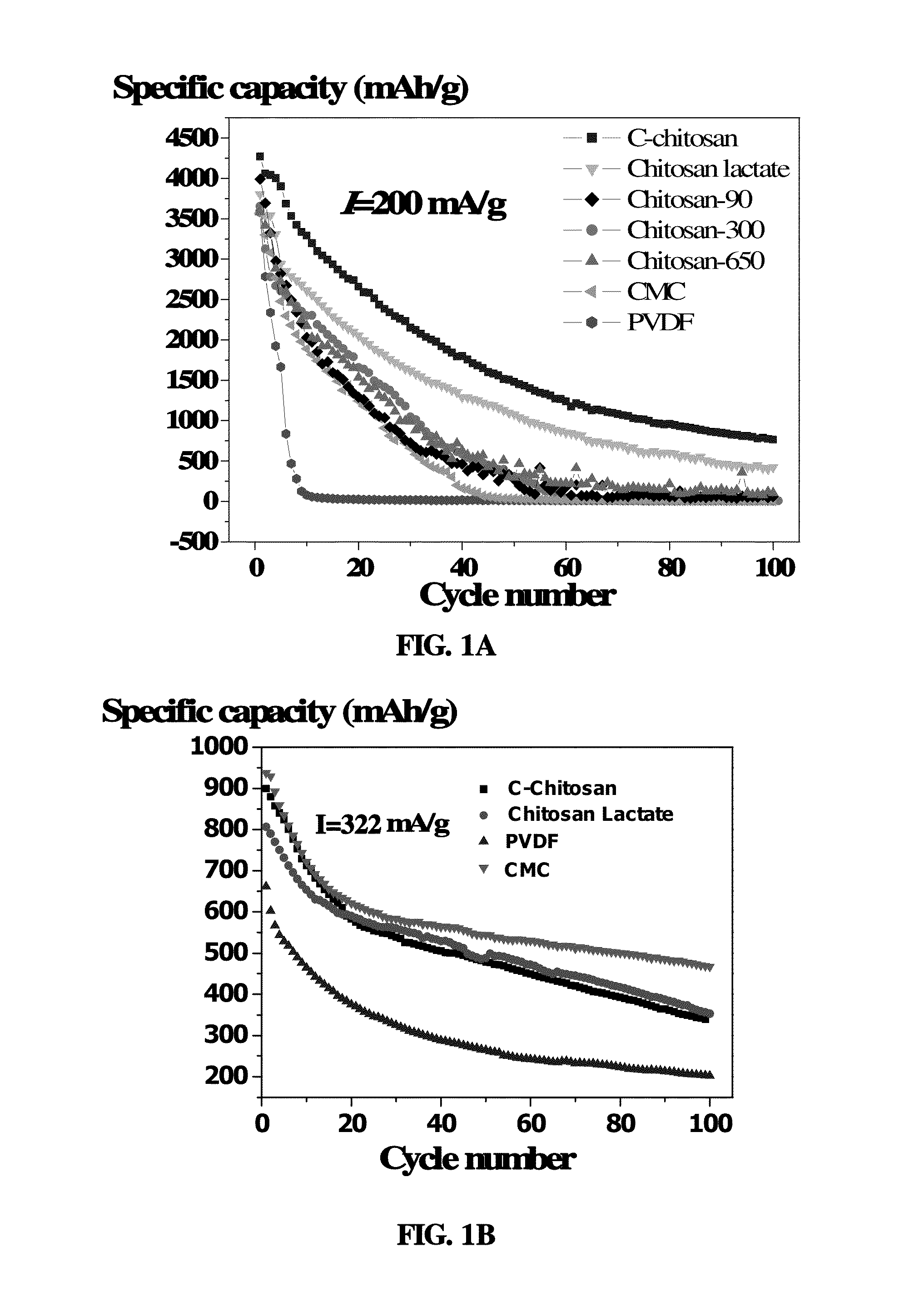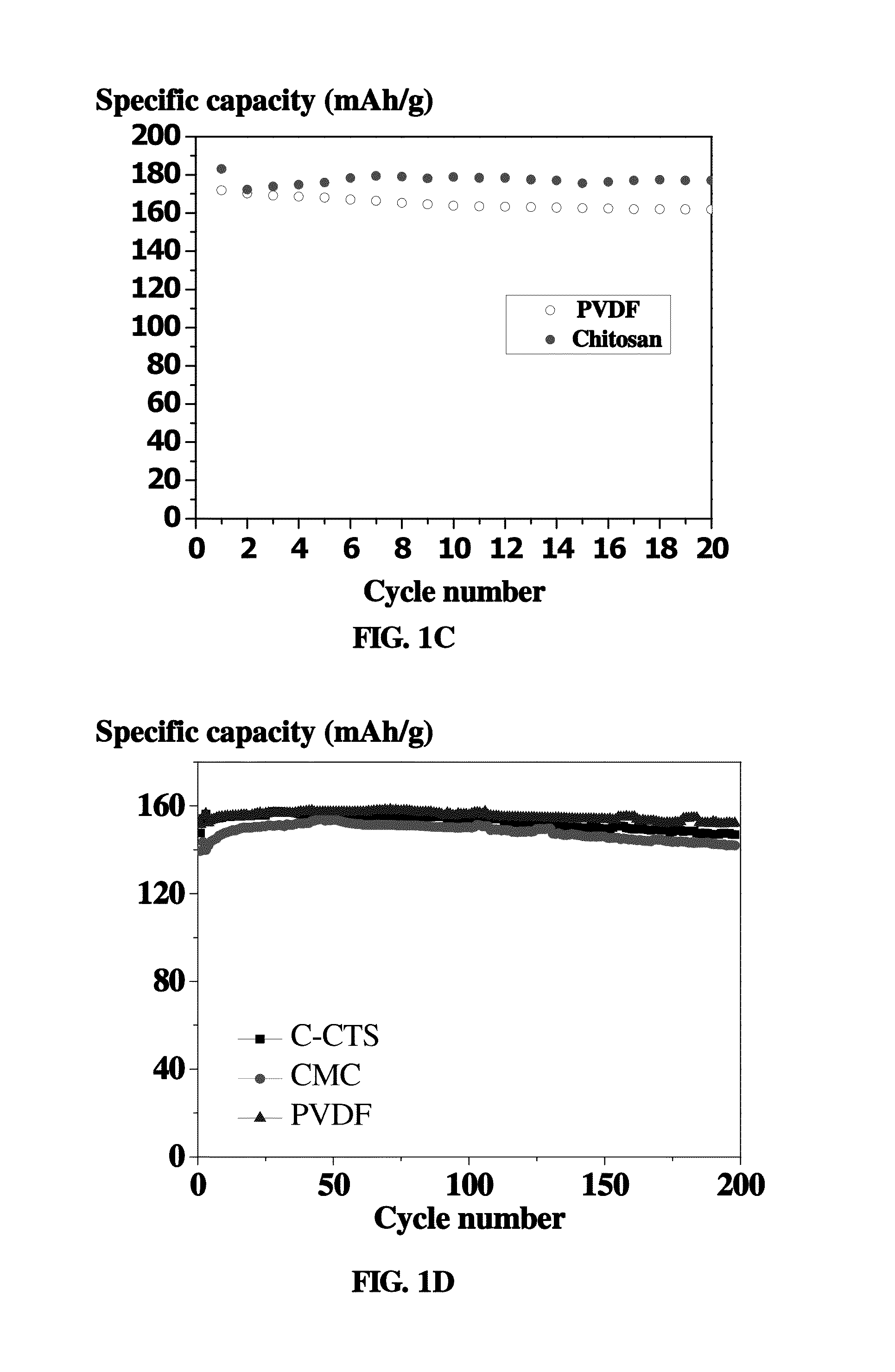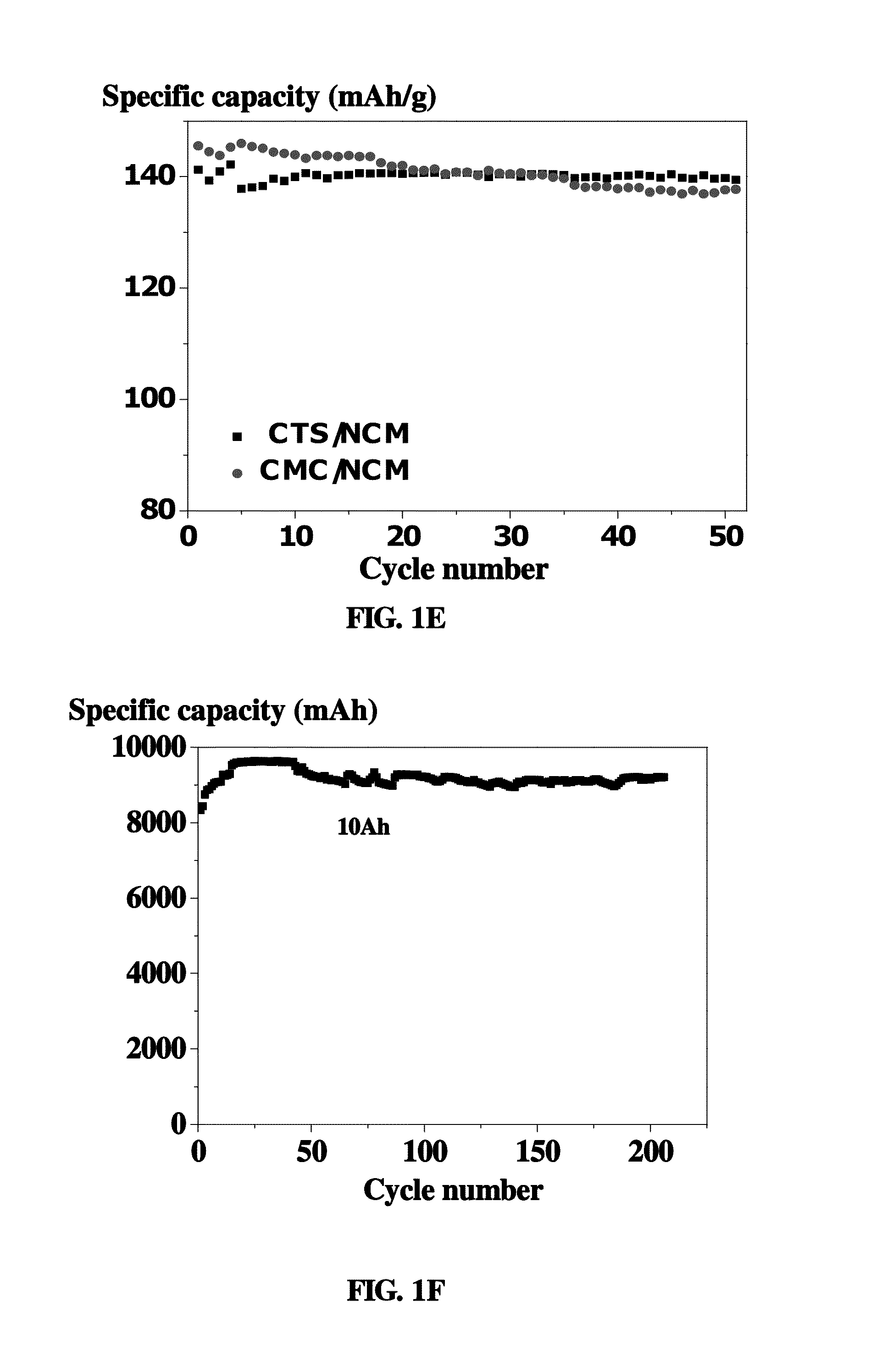Chitosan-based binder for electrodes of lithium ion batteries
a lithium ion battery and chitosan derivative technology, applied in the direction of non-metal conductors, cell components, conductors, etc., can solve the problems of reducing the cycle performance of electrodes, reducing the bond performance of binders, and changing the volume of silicon particles, so as to achieve no pollution of environment, improve cycle performance, and be broad source
- Summary
- Abstract
- Description
- Claims
- Application Information
AI Technical Summary
Benefits of technology
Problems solved by technology
Method used
Image
Examples
example 1
[0045]Prepare an aqueous solution comprising 1-5 wt. % of chitosan having a viscosity of 90 cps (mPa·s) and 1 vol. % of acetic acid, to yield a binder. 80 mg of nano-silicon and 38.7 mg of acetylene black were ground in a mortar for 10 min, and then 0.2064 g of the binder comprising 5 wt. % of chitosan were added dropwise. The mixture was ground for 5 min to enable the binder to be uniformly mixed with the silicon powder and the carbon powder. Thereafter, 1 mL of deionized water was added and ground for another 10-15 min The resulting pasty mixture was uniformly coated on a copper sheet using a 100 μm scraper, and dried in an air dry oven at 70° C. for 5 min. The resulting electrode plate was dried in a vacuum drying oven for 6 hours at 90° C. The electrode plate was cut and weighed, and assembled in a No. 2025 battery case in a glove box. Take lithium sheet as a counter electrode, polyethylene membrane as a separator, and 1 M LiPF6 EC / DMC / DEC (v / v / v=1 / 1) as an electrolyte, to assem...
example 2
[0046]The preparation method is the same as that in Example 1 except that chitosan having a viscosity of 300 cps was employed.
example 3
[0047]The preparation method is the same as that in Example 1 except that chitosan having a viscosity of 650 cps was employed.
PUM
| Property | Measurement | Unit |
|---|---|---|
| vol. % | aaaaa | aaaaa |
| thickness | aaaaa | aaaaa |
| thickness | aaaaa | aaaaa |
Abstract
Description
Claims
Application Information
 Login to View More
Login to View More - R&D
- Intellectual Property
- Life Sciences
- Materials
- Tech Scout
- Unparalleled Data Quality
- Higher Quality Content
- 60% Fewer Hallucinations
Browse by: Latest US Patents, China's latest patents, Technical Efficacy Thesaurus, Application Domain, Technology Topic, Popular Technical Reports.
© 2025 PatSnap. All rights reserved.Legal|Privacy policy|Modern Slavery Act Transparency Statement|Sitemap|About US| Contact US: help@patsnap.com



